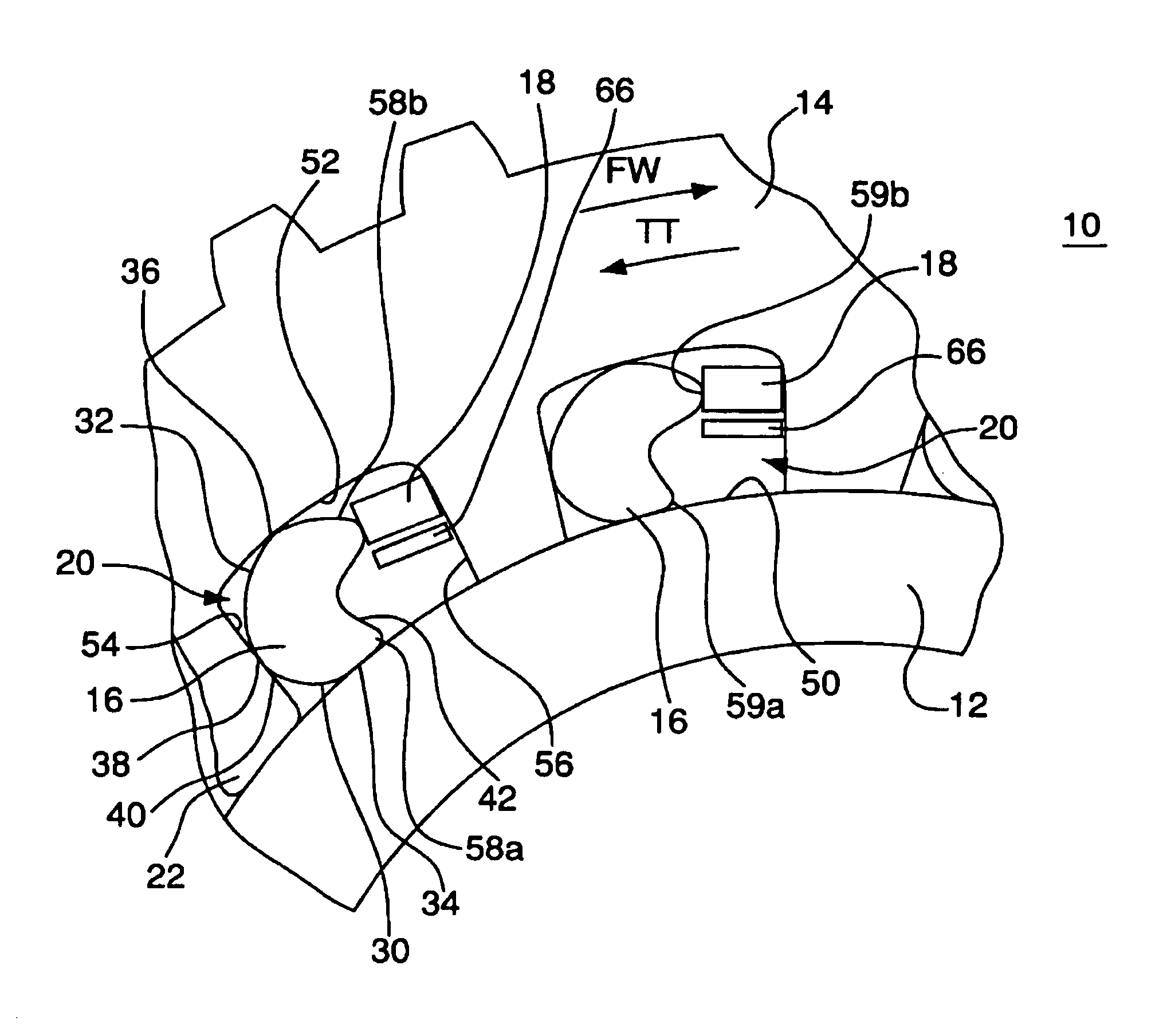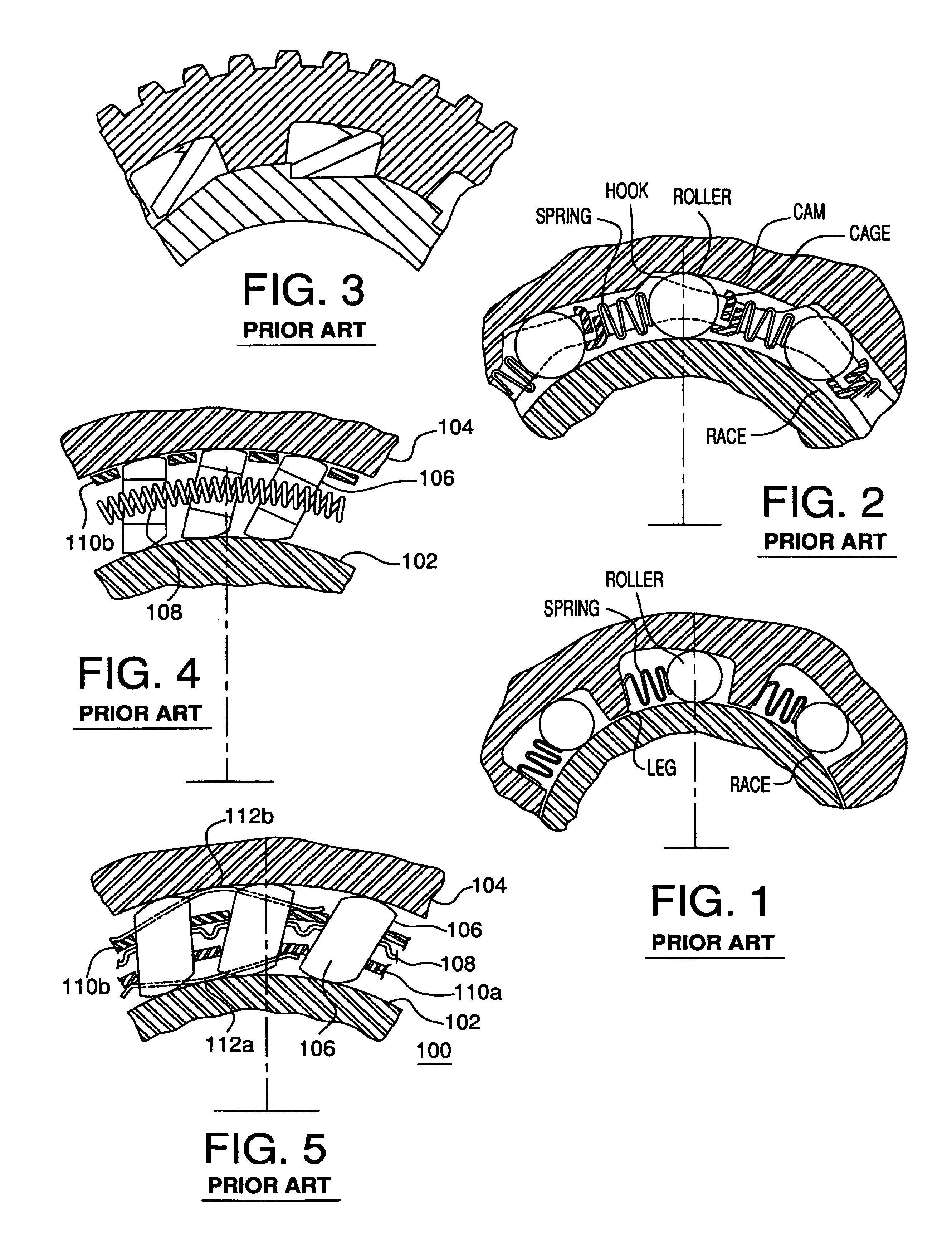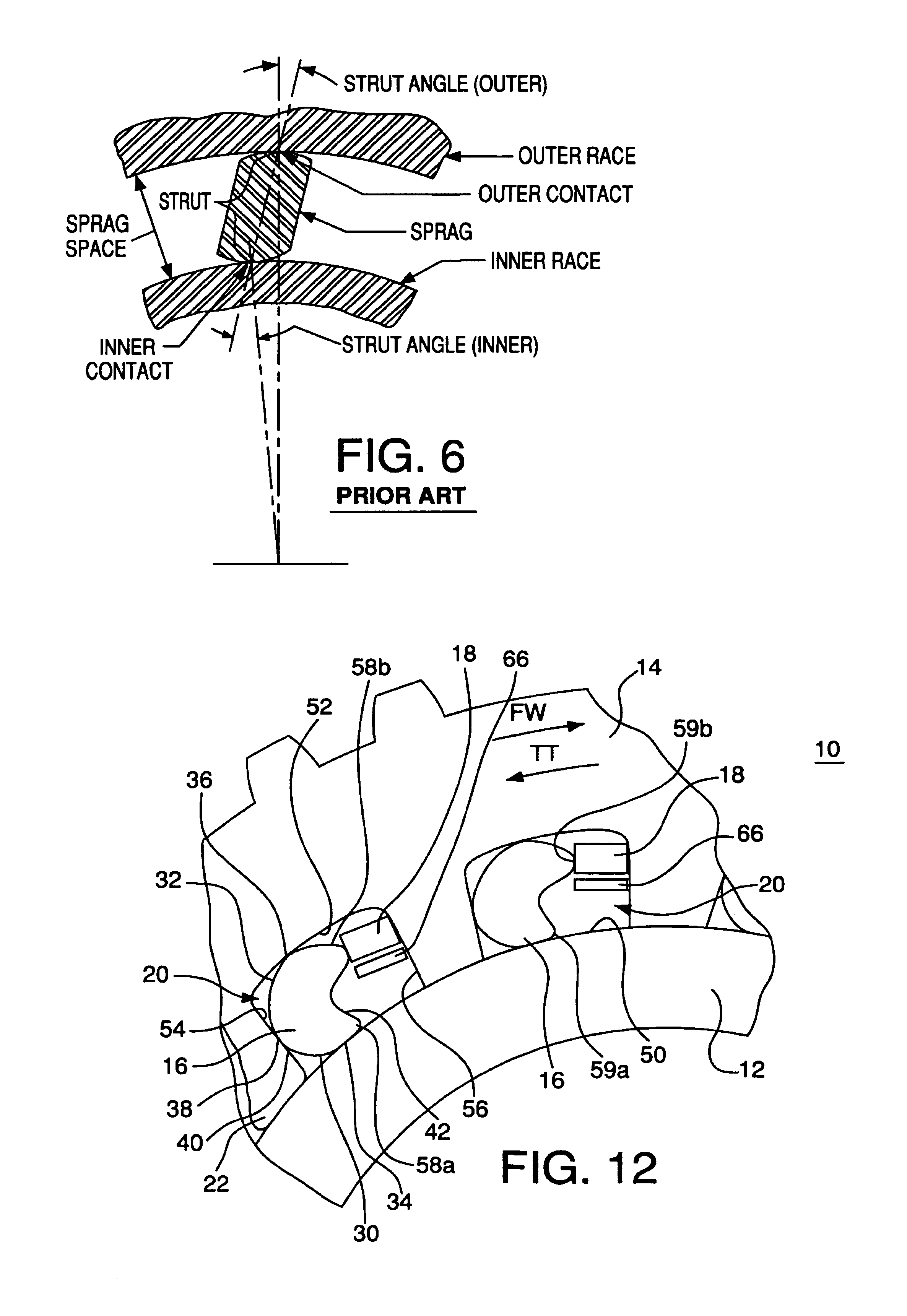Clutch having elements capable of independent operation
a technology of independent operation and components, applied in the field of components, can solve the problems of catastrophic clutch failure, limited appeal, and low static torque capacity of non-phased clutches, and achieve the effects of reducing contact fatigue endurance, reducing costs, and reducing the cost of sprag clutches
- Summary
- Abstract
- Description
- Claims
- Application Information
AI Technical Summary
Benefits of technology
Problems solved by technology
Method used
Image
Examples
Embodiment Construction
[0057]According to an aspect of the present invention, a clutch 10 includes an inner race 12, an outer race 14, and plural elements 16 disposed between inner race 12 and outer race 14. FIGS. 7A, 7B, and 7C show views of assembled clutch 10. Outer race 14, as best shown in FIGS. 8A and 8B, includes inwardly extending legs 22 that form pockets 20 therebetween. Thus, each pocket is formed by a main outer race surface 52, a pocket rear wall 54, and a pocket front wall 56. Legs 22 may have machined surfaces facing inner race 12 to promote concentricity of races 12 and 14.
[0058]An element 16, as shown for example in FIGS. 9A, 9B, and 9C, and a spring 18, shown in FIG. 10, are disposed in each, or substantially each, pocket 16. Each element 16 includes an inner active surface 30 and an outer active surface 32, which are defined as the portions of elements 16 that contact the inner race 12 and outer race 14, respectively, during normal pivoting of the elements between the freewheeling posit...
PUM
 Login to View More
Login to View More Abstract
Description
Claims
Application Information
 Login to View More
Login to View More - R&D
- Intellectual Property
- Life Sciences
- Materials
- Tech Scout
- Unparalleled Data Quality
- Higher Quality Content
- 60% Fewer Hallucinations
Browse by: Latest US Patents, China's latest patents, Technical Efficacy Thesaurus, Application Domain, Technology Topic, Popular Technical Reports.
© 2025 PatSnap. All rights reserved.Legal|Privacy policy|Modern Slavery Act Transparency Statement|Sitemap|About US| Contact US: help@patsnap.com



